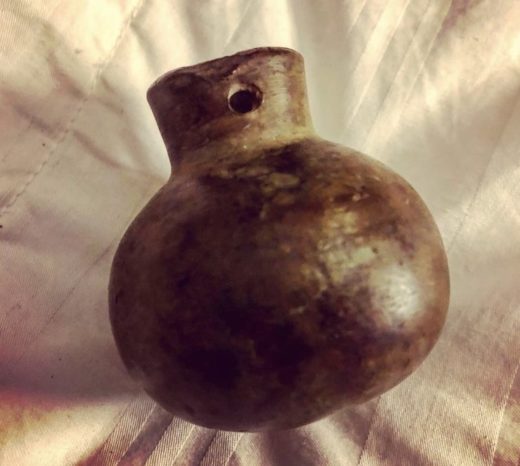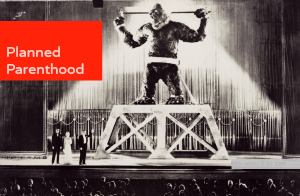As I explained in an earlier post, I’m in the process of making my way through the house and separating the wheat from the chaff, determining which items will remain in our family archive, and which will be jettisoned into the ever-churning gyre of garbage that surrounds us. What follows is my justification for keeping the second item to find its way into the official archive.
TITLE: Historic Ann Arbor Farmhouse Brass Doorknob
ITEM NUMBER: 0002
BOX NUMBER: 1
DESCRIPTION: When I was an undergraduate, studying American Culture at the University of Michigan, I worked several jobs in Ann Arbor. I cooked at both The Brown Jug and Seva, and I had a work-study position at the Hands-On Museum. Well, a few years after I graduated, and moved back to the area from Atlanta, so that Linette could get her masters degree in Creative Writing at Eastern Michigan University, I reconnected with folks at the Hands-On Museum, and joined the staff as the assistant to the Museum’s director. This, I think, would have been about 1995. And, over time, my position changed, as I started working more in marketing, communications, and fundraising. Well, at some point during my tenure as an employee at the museum, which was probably around two years in length, I proposed an idea for an historic archeology summer program… I’d been pushing the Director to establish a Hands-On History program for some time, to no avail, but she’d agreed to let me create a summer camp program, which I did with great enthusiasm. [Before transferring to the University of Michigan, I’d worked as an historic archeologist for a few years with Ed Rutsch, the renowned former President of the Society for Industrial Archeology, and, while I loved teaching kids about science, my first love was always American history.]
So I built a summer program that I was incredibly proud of. I contacted the Ann Arbor Fire Department, got them to give me access to an old farm site outside of town that they’d used several years before in a training exercise, and started thinking about how I’d best convey to kids the excitement of digging in the dirt, collecting clues as to what had happened on a site, and then coming up with theories as to who lived there, the kinds of lives that they had, etc. And, what I came with, I think, was pretty amazing. We walked the site, we talked about the history of Ann Arbor, we researched old insurance maps of the area, and we came up with a plan together as to where we’d dig, talking about the things we were likely to find. [I knew that we’d find quite a bit, as the Fire Department had told me that they’d torched the old farmhouse with everything in it. If I’m not mistaken, it was primarily an exercise for their arson investigators after the fact, although they also fought the fire.]
Anyway, this, I believe, is the only artifact that I kept. It’s an old, seemingly hand-made doorknob. I’m holding it in one hand now, as I type with the other, and I love the weight and feel of it. More so, though, I love the memory of what had to be the best educational experience of my life. I don’t know how many, if any, of those kids went into the fields of History or Archeology as adults, but I know, based on how early they showed up each day, and how hard they worked, that I made a positive impression on them. [For what it’s worth, the intern who worked with me on the project, who was in the UM Archeology program at the time, told me that she got more out of the experience than any class she’d taken in college, and that still makes me happy.]
I can’t remember much of what the kids discovered, but I think, by the end of the program, we’d identified the foundations of the buildings, exhumed the outhouse site (where the family would dump their broken dishes, bottles and such), determined that the house had burned, and identified the family how had lived there. As I recall, we may have even reached out to one of their descendants… Oh, and I distinctly recall finding quite a few pieces of silverware etched with the either the name of the UM hospital, or the old Ypsilanti State Mental Hospital. As I recall, our theory was that they must have fed their hogs refuse from the hospital, and that silverware occasionally made it into their troughs.
I should add that, several years after this, while working for a satellite communications startup in D.C., I went to the Smithsonian and applied for a job in their Hands-On History program. I got an offer, but ultimately decided not to take it, as I didn’t think that I could pay my bills on what I’d be making there. I don’t, as a rule, have a lot of regrets in life, given how things have turned out for me, but I do kind of wonder sometimes how things would have turned out if I’d stayed in D.C. and worked for the Smithsonian. [Also, I never got an official offer from The Henry Ford Museum, but, when I returned to Michigan in ’99, after a few years of working for tech companies in D.C. and LA, I applied for a position. As I recall, I’d gone in a few times to meet with them, and things were looking good, but, before they could make an offer, I’d taken another job.]
So, that’s why I’m keeping this old doorknob. It’s not just a cool, old artifact, but it’s a reminder of a great summer spent outside with smart, inquisitive kids, talking about local history. [I can still remember how fun it was, when someone would find something of interest — a broken section of a fieldstone wall, a piece of a clay pipe, an old kitchen appliance — and we’d all gather around to theorize as to what it meant. I miss having that in my life. I miss huddling around an 1897 Sears catalog, and trying to figure out what the things we were bringing up from the ground might have been.]













9 Comments
Maybe in 100 years, MM the IV will find my old Motorola flip phone and wonder how we functioned with such primitive communicators modeled after archival Star Trek documents.
There’s too much junk now. It’s relatively easy to identify things from the past, at least in terms of durable home goods. Pretty much everything in the turn of the century American farmhouse could be found in the Sears catalog. I wonder how many different makes and models of cell phones are out there now. I guess they’d be easier to identify in some ways, due to serial numbers and such, but the historic archeology of the future will be so much different and less interesting. [I do think it would be cool to mine historic landfills, though.] There’s nothing better than finding an outhouse location (looks for lilacs) and sifting through for broken bottles, shards of pottery, etc.
Ive been holding this knob since I posted this, just thinking about all of the people that turned it over time… wondering if anyone is still alive today who maybe turned it as a kid.
Longest post about a doorknob … ever
I grew up on a farm built in 1834. The previous occupants had used a part of the creek bed as a dumping ground for broken housewares and tools. I spent I lot of my childhood excavating that area finding broken pieces of china, pots, broken wagon wheels and laundry tubs and the occasional horseshoe. It was a wonderful way to pass the time. I still take the kids there. My dad cleared most of it out a while ago but the creek bed turns up some gems still. Years ago I was hanging out at the creek in Bird Hills and my daughter found a horseshoe speaking to a time when those woods were pasture. We live surrounded by history. It’s a lovely thing to awaken kids to the past’s presence around us. I continue to prefer old things to new. I don’t really understand the desire for brand new things. My son just thinks I like dirty old stuff. Just looked up the etymology of ‘brand new.’ It derives from branding iron– i.e. straight from the fire. I wonder what future civilizations ( if we are lucky enough to leave behind a habitable planet) will make of all our plastic waste that is sure to outlive all of us. I remember the broken things at the farm spoke to me of the hard work of settled lives. Maybe the plastic will speak to our need to live sped up lives of convenience and distraction.
https://crookedhouse.typepad.com/.a/6a00e54ecc66978833014e8bc59010970d-popup
Excavating a privy site by what was once a cabin on the side of a mountain in New York State, I remember finding a small pair of unbroken glasses, and thinking about the person who lost them while going to the toilet, and how much it must have sucked. I miss having the opportunity to have those kinds of things to think about on a daily basis.
My late life ambitions remain to have adequate time for tinkering, lingering and pondering.
I just want to not die in the street without insurance.
Sounds like you just don’t want to die without an old door knob. Rather than archive it, can you deploy it and give it function in your environment? Can you combine it with some other piece into yard art? That way when you die you’ll have all those great memories with your door knob, instead of just a bullet item on an archive inventory.